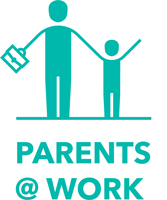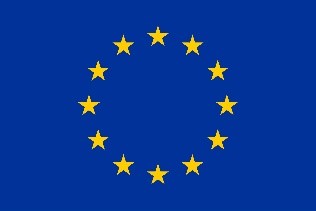Specific situations
In these specific situations you will find additional information, in conjunction with the checklists. The administration and regulations concerning pregnancy, parenthood, adoption, etc. can be complicated.
What if specific situations arise (such as expecting twins or adopting a child with a disability), or things do not go as planned (such as your employee having a miscarriage or the mother dying during childbirth)? As an employer, you must be able to respond to these situations, and often even take into account 'exceptions' to the previously described regulations and administration.
Are there matters that you as an employer have had to deal with, but are not described here? Let us know and we will look into it, at egalite.hommesfemmes@iefh.belgique.be.
What if the employee is expecting twins or multiple births?
The dates for administration and leave, for the pregnancy, will then change.
- (No later than) 9 (instead of 7) weeks before the expected delivery date the employee will provide you with a medical certificate confirming this date. They will also send this certificate to the health insurance fund, following which you need to fill in an information form online. Based on this form, the health insurance fund will calculate the benefit for the pregnant employee. Indeed, a pregnant employee does not cost the company anything during her maternity leave, the health insurance fund pays her a benefit.
- From 8 (instead of 6) weeks before the expected delivery date the employee can take pre-natal leave. The first 7 weeks of this are optional and can be carried over to the period after childbirth (post-natal leave).
- 8 (instead of 7) calendar days before the expected delivery date, the pregnant employee must stay at home.
- If the employee gives birth before the expected delivery date, the days she did not take of the week of compulsory pre-natal rest are lost. If she gives birth at a later date, the post-natal leave is extended, starting from the 8 weeks envisaged for pre-natal rest (if these have not yet been taken).
- During the first 9 weeks after giving birth, the employee is not allowed to work and is on compulsory maternity leave or post-natal leave.
This can be supplemented with 7 (instead of 5) weeks, if these were not taken before the birth.
- No more than 8 days after the employee resumes work, she must inform the health insurance fund that she has gone back to work. To this end, as an employer, you must fill in the following form: https://www.inami.fgov.be/SiteCollectionDocuments/formulaire_reprise_travail_chomage.pdf.
For the father or co-parent, nothing changes in the event of multiple births.
- As a father or co-parent, the male or female employee is entitled to 15 days' birth leave, the first 3 of which are paid for by you the employer and the remaining 12 by the employee's health insurance fund. These days can be taken all at once or spread over the 4 months after the birth.
TIP: This is despite the fact that multiple births entail major changes for the father or co-parent. As an employer, you can therefore choose to extend the childbirth leave at the company's expense.
For adoptive or foster parents, the adoption or foster parent leave is also extended.
- If several minor children are adopted or placed in the foster family at the same time, the adoption or foster parent leave is extended by 2 weeks.
What if the child falls ill after the birth?
If the child falls ill after the birth and stays in hospital continuously, the employee's postnatal leave is extended by the number of days the child stayed in hospital (except for the first 7 days after the birth).
For example, if the child falls ill and is not allowed to leave the hospital until 14 days after the birth, the employee's postnatal leave will not be 9 weeks but 10 weeks.
If the child falls ill shortly after giving birth and is admitted to hospital, but has already been home in the meantime, this arrangement does not count and postnatal leave is not extended.
TIP: As an employer, you can check whether the mother's postnatal leave can be extended (paid by you as an employer). A newborn baby that needs to be hospitalised again is not a peaceful adaptation to the new life, and something for which extra time can be made available.
What if the employee has a miscarriage?
If the employee loses the child after the 180th day of pregnancy, she is entitled to the full 15 (maximum 19) weeks of maternity leave.
The employee does not have this right if she loses the child before the 180th day of pregnancy, unless a doctor confirms that it can nonetheless be considered as a birth.
For further administrative matters and obligations, go to checklist 3.
In such cases, envisage additional consideration when the employee returns to work. For example, involve the (internal) prevention adviser, a psychologist or another professional counsellor. They can provide you with additional information and help you communicate appropriately with the employee and her colleagues.
What if the child of the employee has a physical or mental disability or condition?
This has an impact on the parental leave and adoption and foster parent leave.
In order to be eligible for an adjustment of leave for having a child with a physical or mental disability or condition, the child must have the following disability or condition (in accordance with the Law of 14 December 2018 containing various employment provisions):
- a physical or mental incapacity of at least 66%, or
- a condition resulting in the attribution of at least 4 points on pillar 1 of the medical-social scale, or
- a condition resulting in the attribution of at least 9 points on the three pillars of the medical-social scale combined.
In such cases, the right to take parental leave is extended until the child reaches the age of 21 (instead of 12 for other children).
The adoption or foster parent leave doubles to 12 weeks in the case of the adoption or fostering of a child with a physical or mental disability or condition.
What if the mother is hospitalised or dies at childbirth?
This is a tragic event, but something which you may have to be prepared for as an employer. As such, we will also provide additional information on this subject.
If the mother is admitted to hospital or dies, the co-parent (father or the married or cohabiting partner of the mother (legally cohabiting, or for three years on a permanent and affective basis) can convert (part of) the maternity leave into birth leave. In such cases, the co-parent replaces the mother and the existing leave and protection against dismissal apply as described in checklist 3.
If the mother dies, the co-parent takes the remaining period of maternity leave as childbirth leave.
- The co-parent must inform you, as the employer, within seven days following the death via a certificate that he/she receives from his/her health insurance fund. This written notification must state the starting date and likely duration of the leave.
If the mother is admitted to hospital, the co-parent takes part of the maternity leave as birth leave. Several conditions apply in this regard:
- The birth leave only takes effect from the 8th day after the birth of the child.
- The child must have left the hospital.
- The mother's stay in hospital lasts longer than 7 days.
The takeover of the maternity leave as birth leave by the co-parent ends when the mother leaves the hospital, or when the period of maternity leave has been used up.
- The co-parent must inform you, as the employer, within seven days following the hospitalisation of the mother via a certificate that he/she receives from his/her health insurance fund. This written notification must state the starting date and likely duration of the leave.
TIP: For this adapted birth leave, the co-parent receives a benefit from the health insurance fund, but this is less than their full salary. Precisely when the family may need this extra money, for a new family member, hospital costs of the mother or costs for a funeral. See how, as an employer, you can help financially and offer a wage supplement for part of this birth leave.
In such cases, envisage additional consideration when the employee returns to work. For example, involve the (internal) prevention adviser, a psychologist or another professional counsellor. They can provide you with additional information and help you communicate correctly with the employee and her colleagues.
What is foster care leave? Is there a difference with foster parent leave?
Foster care leave can only be taken in the event of temporary foster care. Foster parent leave is for long-term foster care of at least 6 months (see checklist 6).
Every foster family, both for temporary and long-term foster care, is entitled to 6 days of foster care leave per year. This leave can only be taken for activities that are directly related to their commitment as a foster family. If the foster family consists of 2 foster parents, this leave (6 days) must be divided between the two of them.
TIP: As an employer, you are free to extend this foster care leave, at the company's expense.
More information on this can be found on the FPS ELSD website.
When is adoption or foster parent leave extended by a few days or weeks?
As an adoptive or foster parent, male and female employees are entitled to a maximum of 6 weeks, basic period, adoption or foster care leave. Each parent within the couple that adopts or takes in a child in the foster family is entitled to these 6 weeks. These 6 weeks do not have to be taken up completely, but it does have to be uninterrupted and in a minimum and multiple of 1 week.
From 1 January 2021, this period has been increased by one week, to be divided between both adoptive and foster parents. From 1 January 2023, 2025 and 2027 another week will be added each time.
These 6 weeks can be extended by a number of days or weeks in certain cases:
- If the male or female employee only adopts: extension by 1 week;
- If the male or female employee adopts together with someone else (2 adoptive parents): extension by 1 week, for only 1 parent;
- If the child being adopted or taken in by the foster family has a physical or mental disability or condition, the leave is doubled to 12 weeks.
Is a co-parent also entitled to adoption leave?
If the co-parent has started an adoption procedure, you can take adoption leave as a co-parent. An adoption procedure is only possible if the person is not the legal parent of the adopted child and is therefore not stated on the birth certificate.
More information about adoption leave can be found in checklist 6.
Please note, the period of adoption leave will be reduced by:
- 1 week if one to five days of childbirth leave have already been taken;
- 2 weeks if more than five days of childbirth leave have already been taken.

